PDF chapter test TRY NOW
Humans have always searched for a magical medicine, which if drunk once, maintains all forms of life healthily; a spiritual substance which can sustain all forms of life forever. But the real cure is right in front of our eyes - the most common type of liquid substances - the humble plain water! The author recollected his experience when he had been to the Libyan desert. He stood on the line that split the Libyan desert from the Nile Valley in Egypt.
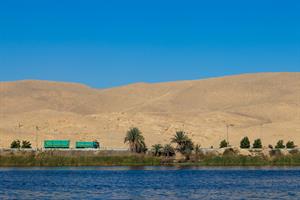
The line that divides the desert from the river!
On one side, he saw huge waves of sand without a single green spot or any life on it. On the other side, he saw the most fertile, most occupied land on earth - swarming with people and greenery. He wondered what brought about this magnificent difference. It is due to the river Nile that flows down the Mediterranean, from a distance of 2000 miles. Geologists, or people who study about the constituents of earth, claim that the river itself has created the soil of the Nile valley. It has accumulated all the excellent mineral sediments from its floodwaters while flowing from the Abyssinia highlands and from interiors of Central Africa. It has been sedimenting in the trenches where the river Nile flows into the sea, for hundreds of years. The author says, the country Egypt itself was created by the river Nile. It has given life to the whole civilization and sustained the livelihood in the area by its regular presence, every year.

Egypt's ancient civilization was created and is sustained by the life-giving waters of Nile!
The author says he had mentioned the example of Nile, and that he can state many more - only to reiterate the fact that we do not take "water" seriously. Since it is the most common substance found on earth, it does not mean it is not essential. It is the most powerful and glorious thing on earth. It has a huge role in defining our history and is continuously playing a critical part in our life on this planet.
Water, in any form, adds beauty to a place - it can be a small stream dripping down the rocks, or a small pond on the way where domestic animals satisfy their thirst during evenings. It makes the whole place beautiful.
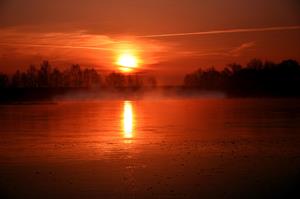
There is nothing which adds so much to the beauty of the countryside as water!
The concept of rain-fed tanks are common in South India, where tanks are built to collect rainwater and used for irrigation. It looks lovely when such tanks are full, and is a wonderful treat for the eyes. But the system has not been given proper care and maintenance. They have less depth, but it does not matter - the water is full of mineral sediments and it reflects the light in such a way that the river-bed part is not seen from outside. These tanks are essential for agriculture in South India. Some huge tanks are a beautiful sight, especially during sunrise and sunset time. The author compares the water in a land area to the eyes in a human face. He explains its importance as it demonstrates the mood of the hour - when the sun is bright and shining, the water also sparkles bright; it becomes dull and dark when it is cloudy.
A distinguished fact about water is that it has the power to carry mineral sediments or fine particles of soil in a mixture state. This is how water gets its colour in the rainwater tanks. The colour keeps changing with the earth's different forms, in the tanks where rainwater is stored. It varies according to the different weather patterns - when there is fresh rain, the colour changes into brighter tones. Fast-moving water has the power to carry bigger and heavier particles, due to its force. But, the dissolved small particles keep moving within the water, even if it has greater volume; they travel to far distances. Such constituents - though small, they are higher in number and huge amounts of solid sediments travel in water through this method.
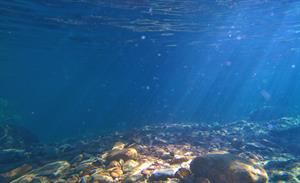
Silt-laden water - filled with nutrients and minerals!
When the water with soil and minerals mixes with the seawater, there is a swift action of precipitation. Precipitation means the water that falls as rain or snow, due to the chemical reactions in the environment. This action is very evident to our eyes when we travel by steamboats in huge rivers to the deep sea. The colour of the water also varies continuously from muddy red, brown (when silt is mixed in it) to different shades of yellow/green and finally becomes blue in the deep sea. A detailed study of the silt-deposited soil in such areas has revealed that the silt has thus formed vast areas of land. These lands are very fertile in nature.
One of the most important geological process is the simple flow of water. It is one of the primary reasons for the conversion of rocks (from earth's crust) into soil. Though it serves as a huge advantage, there is an equal disadvantage as well. In some circumstances, it erodes the soil which forms the basic layer of all farming lands. If not checked at appropriate conditions, it can have devastating effects for the whole country. Washing away of the soil is one of the grave problems in India, especially being an agricultural country. The causes and measures to avoid soil erosion have to be examined carefully.
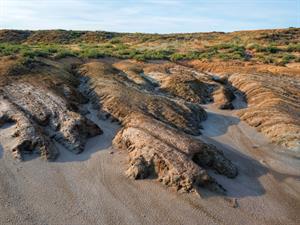
Soil erosion!
Soil erosion takes place in a step-by-step process. The first few stages may not be evident; but as it progresses to the later stages, the cutting and washing away of the earth's soil is very clearly seen, and it is very upsetting. It is visible in the formation of deep, narrow passes which makes the land unfit for farming. Sudden heavy rain is a huge factor contributing to this problem - heavy rains result in massive outflow of water, which washes away the soil along with it. Other factors which worsen this problem are:
- slope in the land - makes water rush out faster
- there is no vegetation (trees) on the land, which can naturally check erosion
- ruts or grooves made by the passage of vehicles, allows quicker, stronger outflow of water
- absence of any checks of such outflow of water
When such erosion occurs, unbelievable quantities of soil can be washed out. It is to be noted that such huge amounts of soil are washed away frequently!
This problem of soil erosion proves to be a significant threat to agriculture in many parts of India. It requires immediate action and calls for preventive measures. Some of them are:
- Terracing of land refers to a process of cutting pieces of sloped land into a series of successively receding flat surfaces or platforms, which resemble steps. It stops water from rushing out and therefore silt sediments are also retained.
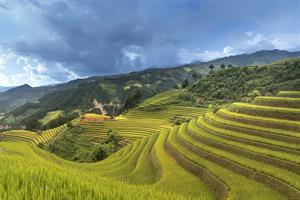
- Building walls (bunds) around water bodies to hold back water.
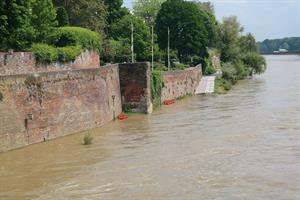
- Contour cultivation or ploughing is the farming practice of planting across a slope following its elevation border lines. These borderlines already formed in the hill slopes, (contours) create breaks for water, reducing the formation of gullies during heavy rainfall. This process allows water some extra time to settle in the soil before it gets washed away.
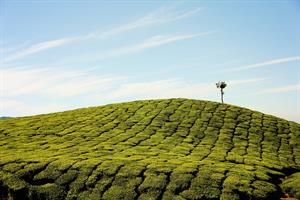
- Planting correct types of crops in the related areas of soil. Each crop requires a different kind of soil and climate and it has to be grown accordingly.
The primary purpose of the above measures are to check the inflow/outflow of water at the earliest possible stage before the water gains speed and force to wash away the topsoil along with the nutrients. It can save us from massive destruction in future.
Water is a basic necessity. All plants, animals, even humans, have a considerable amount of water in their bodies. Fluids facilitate physical movements in the body parts to function smoothly. Like how water is imperative for body functions in animals, it is also vital for plants. Wetness in the soil is an essential factor that decides the growth of crops/plants. Each species has varying levels of consumption of water. Hence, conservation and effective utilization of water resources is a basic requirement for the welfare of the people.
Artesian water is a specific type of underground water that comes out through springs, due to natural pressure. Except for artesian water, our only sources are rainwater or snowfall. Indian agriculture depends heavily on monsoon rains and is immediately affected when seasonal rains fail.
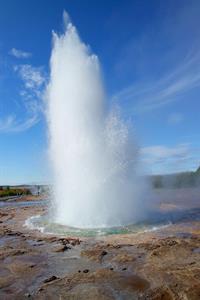
Artesian water, an underground source of water!
Soil erosion and insufficient rains are related to each other. If the preventive measures are adopted effectively, it checks soil erosion and also helps to protect the available water resources on and in the soil. Therefore it serves a double purpose.
It is clear that India being an agricultural country, depends on seasonal rainfall. When a considerable quantity of water comes down as rainfall in a particular season, some part of it must be able to run off the ground. At the same time, we need to collect and effectively use the excess water in future. Hence this conservation of water is of great importance. A lot of the rainwater flows into the rivers and streams and finally reaches the ocean. Large amounts of silt-laden water (with all nutrients) are thus mixed in the sea, making a huge loss for the mankind. We have to take control of the abundant water and use it to produce sustainable energy - it is a matter of national importance. If we can handle this issue with a well-planned and bold course of action, enormous areas of land which are wasted as shrubs and bushes can be converted into fertile farming lands.
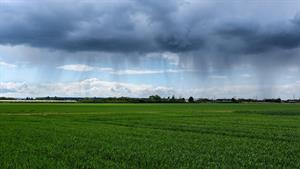
Our agriculture depends on the seasonal rainfall!
Another aspect closely connected with the conservation of water resources is afforestation. Planting trees according to the vegetation, climate and soil in every possible bit of land is essential. Converting all the wild forests into fertile lands that reap benefits is the need of the hour in our country. Such an action would lead to a good amount of creation of wealth for the country.
- Having more trees also helps in preventing soil erosion.
- Conserve rainwater by avoiding wastage.
- Reduce the conversion of farm manure into fuel, as it provides for more fuel at cheaper rates.
The measures discussed above, to handle the flow of water and to conserve water, also serves a secondary purpose. It helps the people of the country by serving as a mode of transport. One of the cheapest forms of transportation in a country is the water transport (boats). Boats sail through canals and rivers. Instead of spending huge amounts on rail and road transport systems, we can concentrate on internal waterways. Also, hydro-electric power may be tapped from the water resources. The production of electric power can greatly benefit rural parts of India, and it facilitates growth in all directions.

Boats barges through canals and rivers!
Water is the most common form of all liquids because it is available to all. But how can it also be the most uncommon form is a question; it has wonderful properties which enables it to sustain plant and animal life. How can the most common form of liquid also have such exceptional properties? The examination of the nature and features of water is always of tremendous interest and research in the field of water is still a never-ending process.
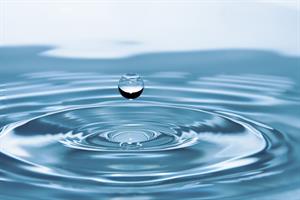
Water - the most common and uncommon form of liquid!
